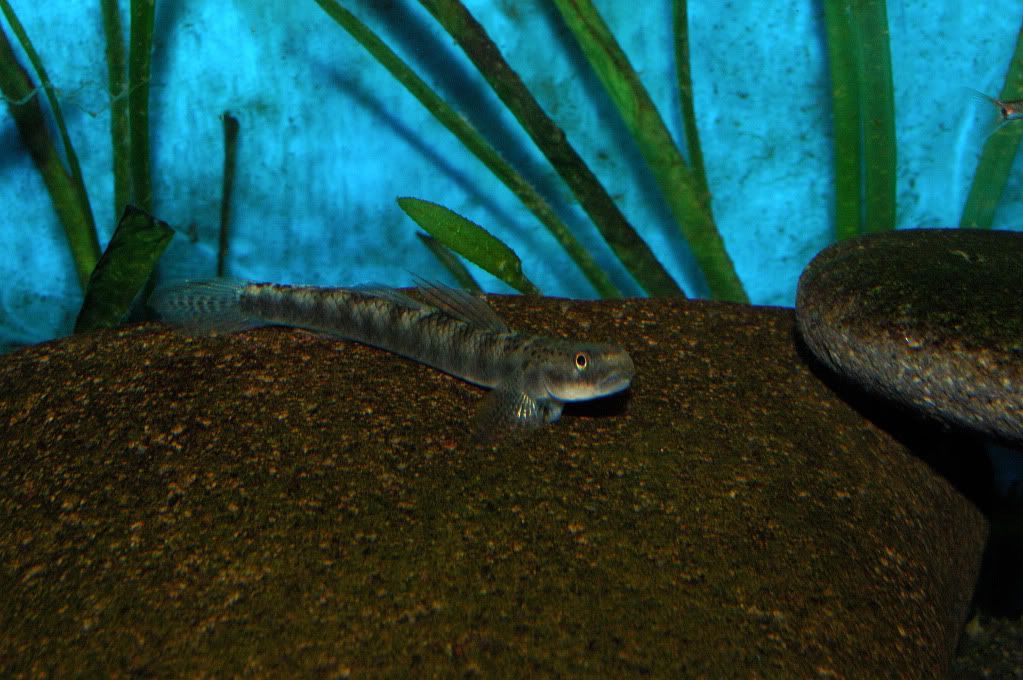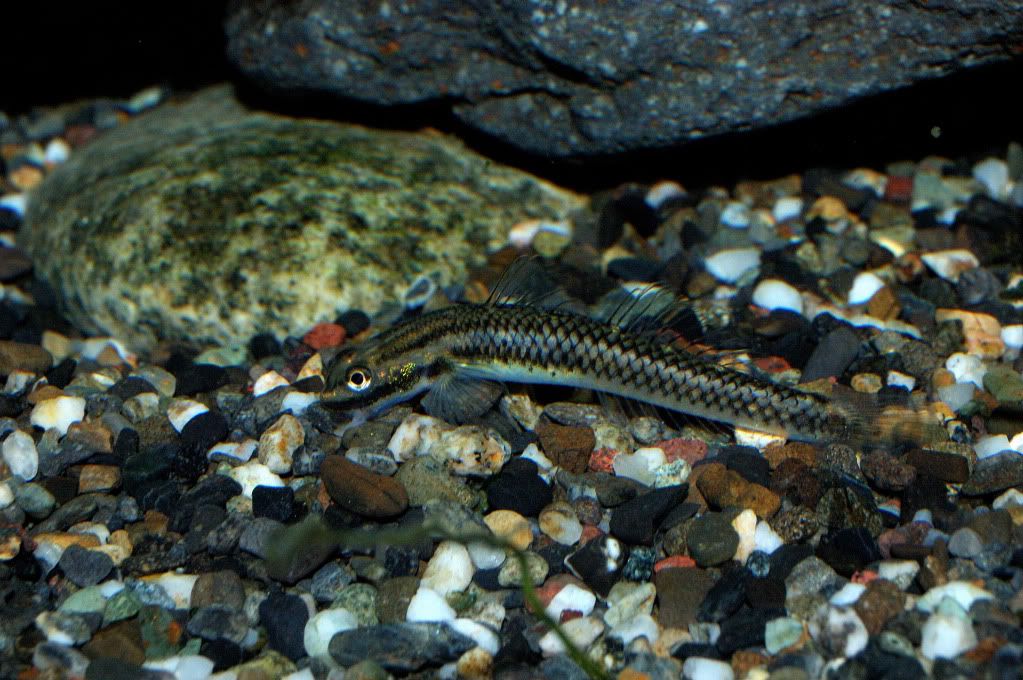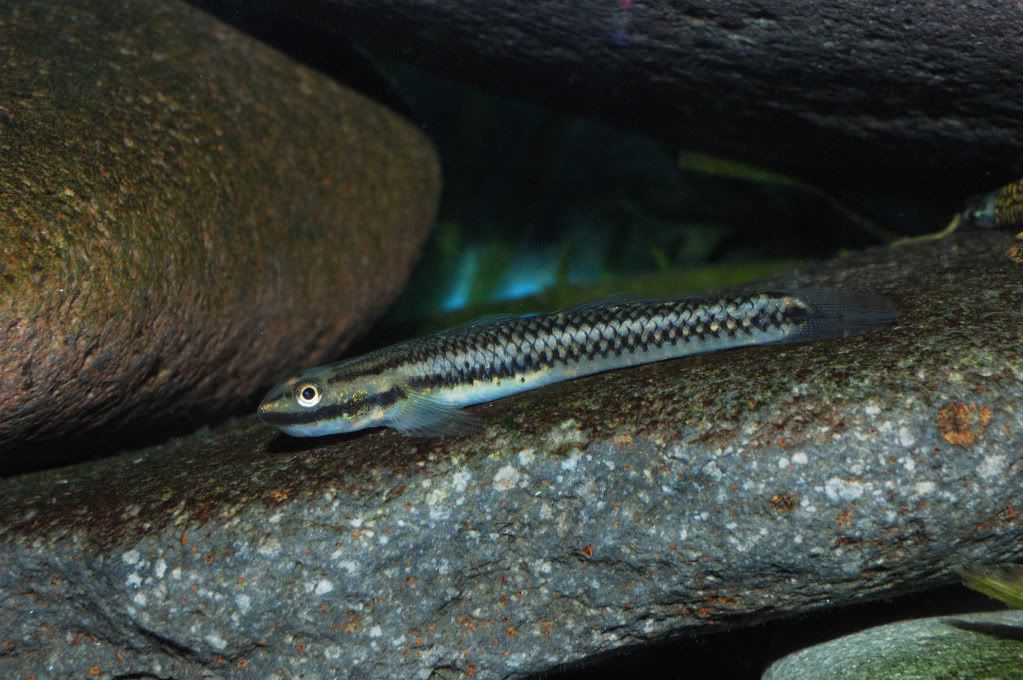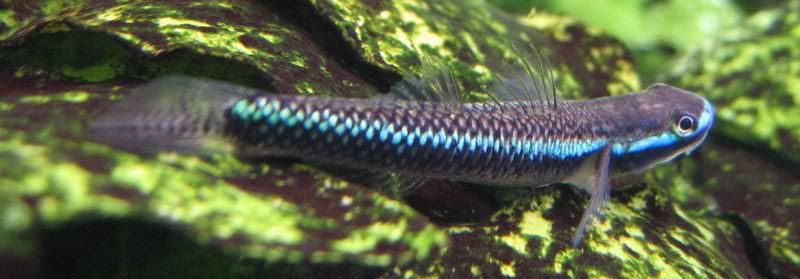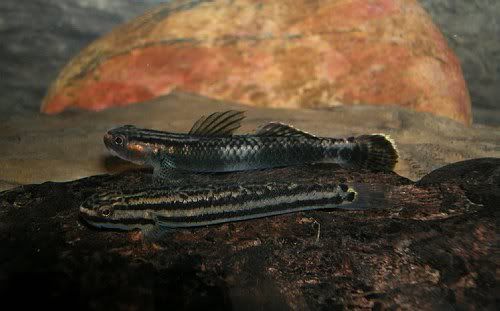Hi Matt.
There are no confidences so much.
There may be 17 individuals in last sequence of "Orange-fin" male pictures.
Hi plaalye.
Dr. Mukai mentioned that it's unclear as of 2004.
He was the scholar studying goby and kept "Orange-fin".
Those DNA analyses were also done, but he doesn't fix the ID easily.
I believe the ID decided by an old method to be corrected substantially by the spread of a DNA analysis eventually.
The male applies to neither S.percnopterygionus, "Orange-fin" nor "Rainbow-color".
Therefore when it's I, it's applied to "Blue-moon" group.
But the "Blue-monn" group is most troublesome for me.
Image collection of a group of "Blue-moon" has been finished, so it's indicated below.
Many fishes of the Stiphodon genus are imported from the Indonesian outskirts.
These are called "Blue-moon" or" Metallic-blue " in Japan.
I suppose that probably S.semoni will be included in this group.
The fin of this group is transparent, and the pattern is simple, too.
However, this will be a fundamental color pattern.
I have not yet watched their male sexual excitement in my tank.
They will surely change a color of the body at the time of the sexual excitement like other Stiphodon, too.
Mr.Taro observes a breeding action of "Blue-moon".
http://www17.tok2.com/home2/tarogoby/b_bluemoon.html
This group disturbs me most.
I do not know the boundary line which distinguishes S.atropurpureus from S.semoni by appearance.
By mention of Fish-base, there is it with "dorsal fins with narrow red margin".
However, their color of the body changes.
When the red margin disappears, on earth I distinguish how?
I realized that a
male color of the body of Stiphodon changed drastically.
The color of their body with the luster changes by an angle.




A presence with the design of the dorsal fin isn't certain.
Anyway, those aren't invariable.






The fleck pattern looks faint in a dorsal fin at this time.



It is said that both S.semoni and S.atropurpureus are distributed over the Philippines.
I looked at their natural habitat in the Philippines.
I saw the male that had the black dorsal fin with blue and black color of the body.
And I saw another male that a dorsal fin is transparent in a golden color of the body too.
Is it S.atropurpureus that the fin is black? and is it S.semoni that the fin is transparent? ?
Two types inhabit together, and I think that the two types depend on the difference of the sexual excitement.




 How would the person of mention of the ID distinguish 2 species without depending on a color pattern? ?
How would the person of mention of the ID distinguish 2 species without depending on a color pattern? ?
I hope that this trouble is solved in the near future by DNA analysis.
I suffer from the individual imported from Taiwan, too.
http://tw.myblog.yahoo.com/sredsun/arti ... l=a&fid=16
The site that introduced a natural habitat in Taiwan
http://tw.myblog.yahoo.com/sredsun/arti ... l=a&fid=19
It has been sometimes imported as S.atropurpureus from Taiwan recently.
However,whether the edge of the dorsal fin is red depends on in case of.








I think that probably they came from Taiwan. However, the dorsal fin does not have the red hemming.

The Indonesian guy seems to recognize the Taiwanese guy to be a rival.


Okinawa(Japan) and Taiwan are next around the sea.
Ishigakijima island in Okinawa and Taiwan aren't only about 270 km away.
It is the distance that their fry drifts by the Kuroshio Current in two or three days.
Okinawa of the Japanese southern part is northern limit of the distribution of Stiphodon genus.
S.atropurpureus inhabits there just a little, too
The state in a natural habitat of S.atropurpureus of Japanese Okinawa and Amami-shoto Islands.
http://island.geocities.jp/churamizu/ko ... zuhaze.htm
http://amami-gobies.amamiensis.com/news ... ureus.html
http://tsudoi-company.com/photogallery/ ... zuhaze.htmI am not used to English. Therefore,It is likely to sometimes misunderstand it.
